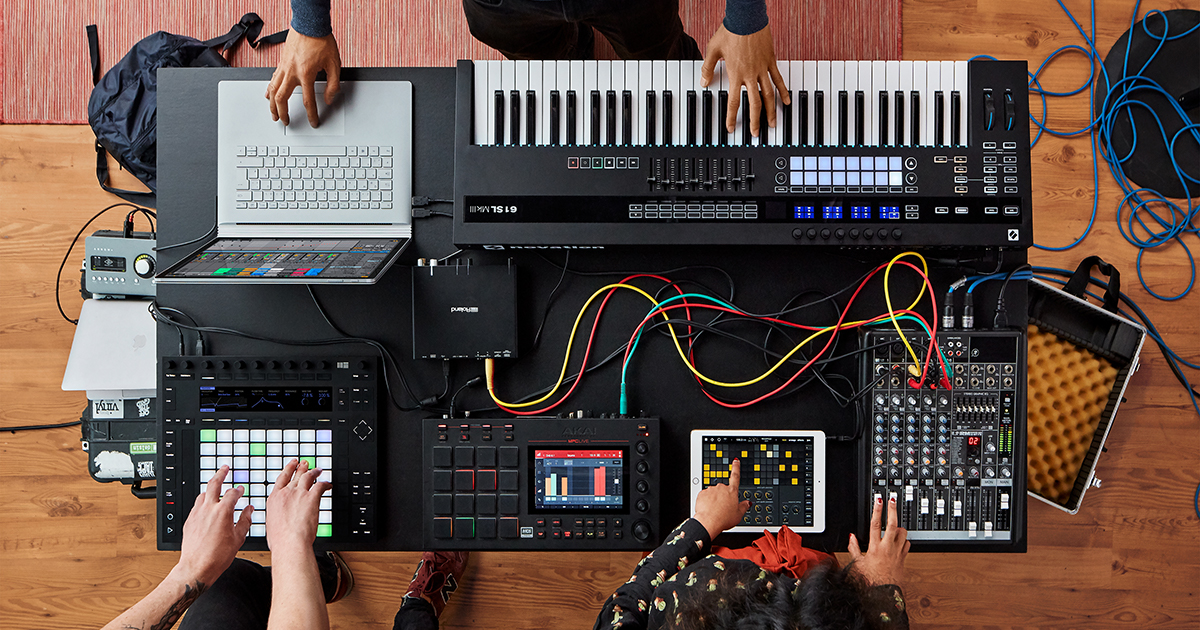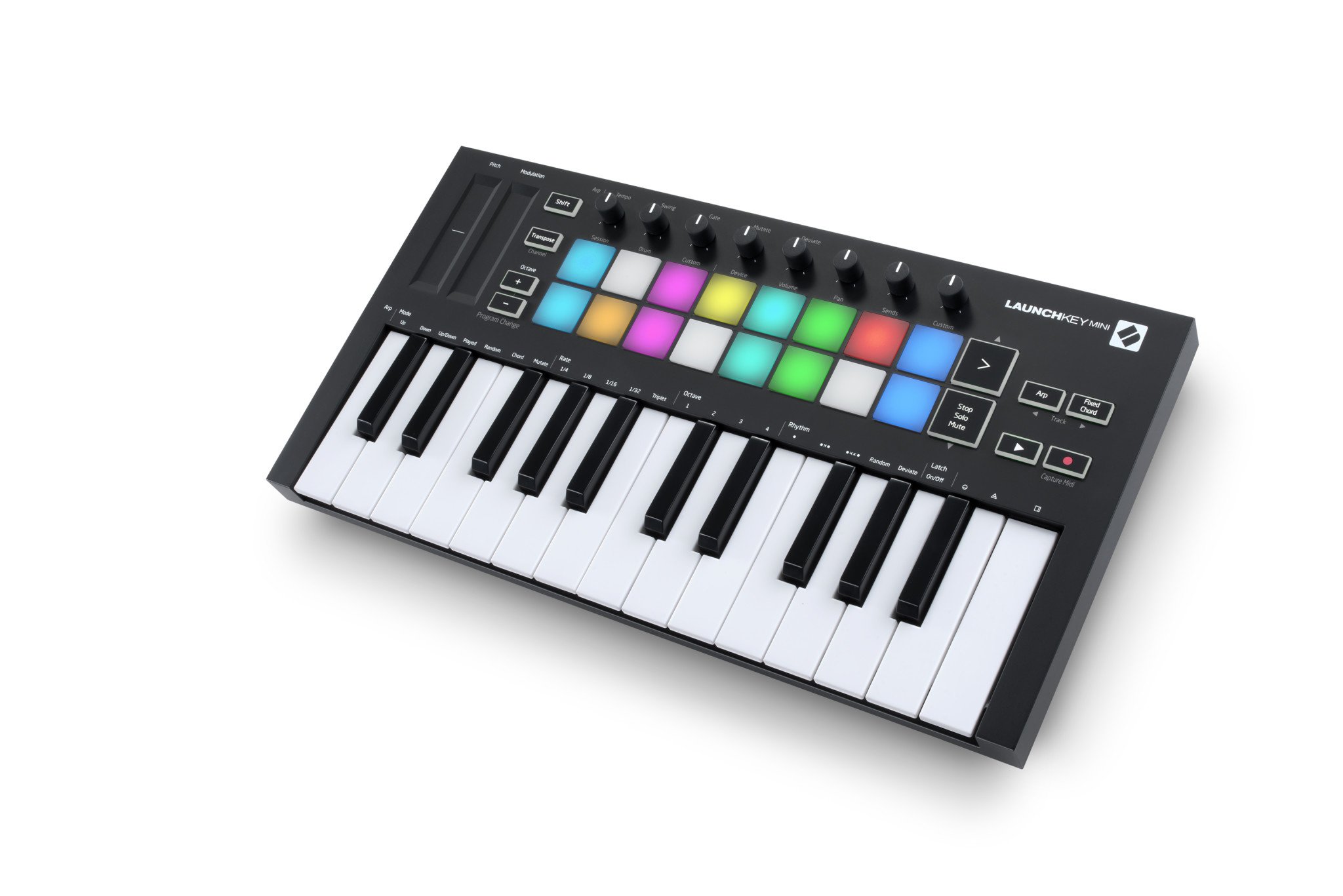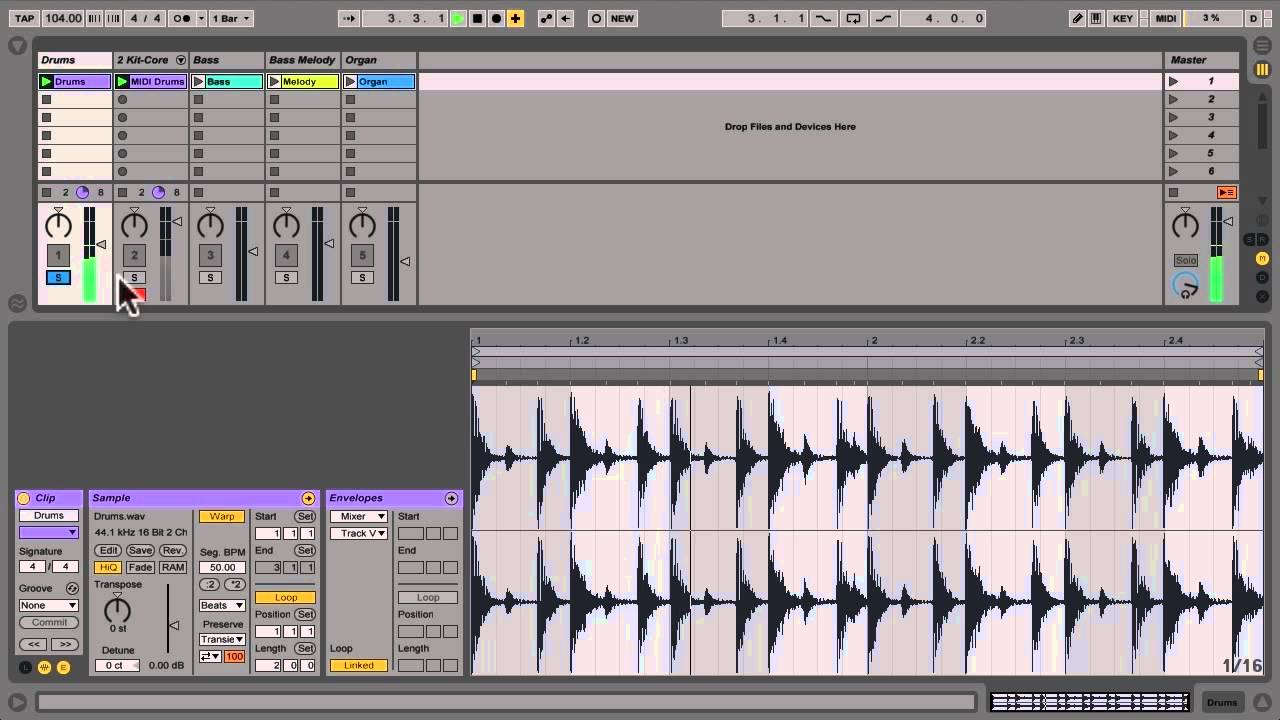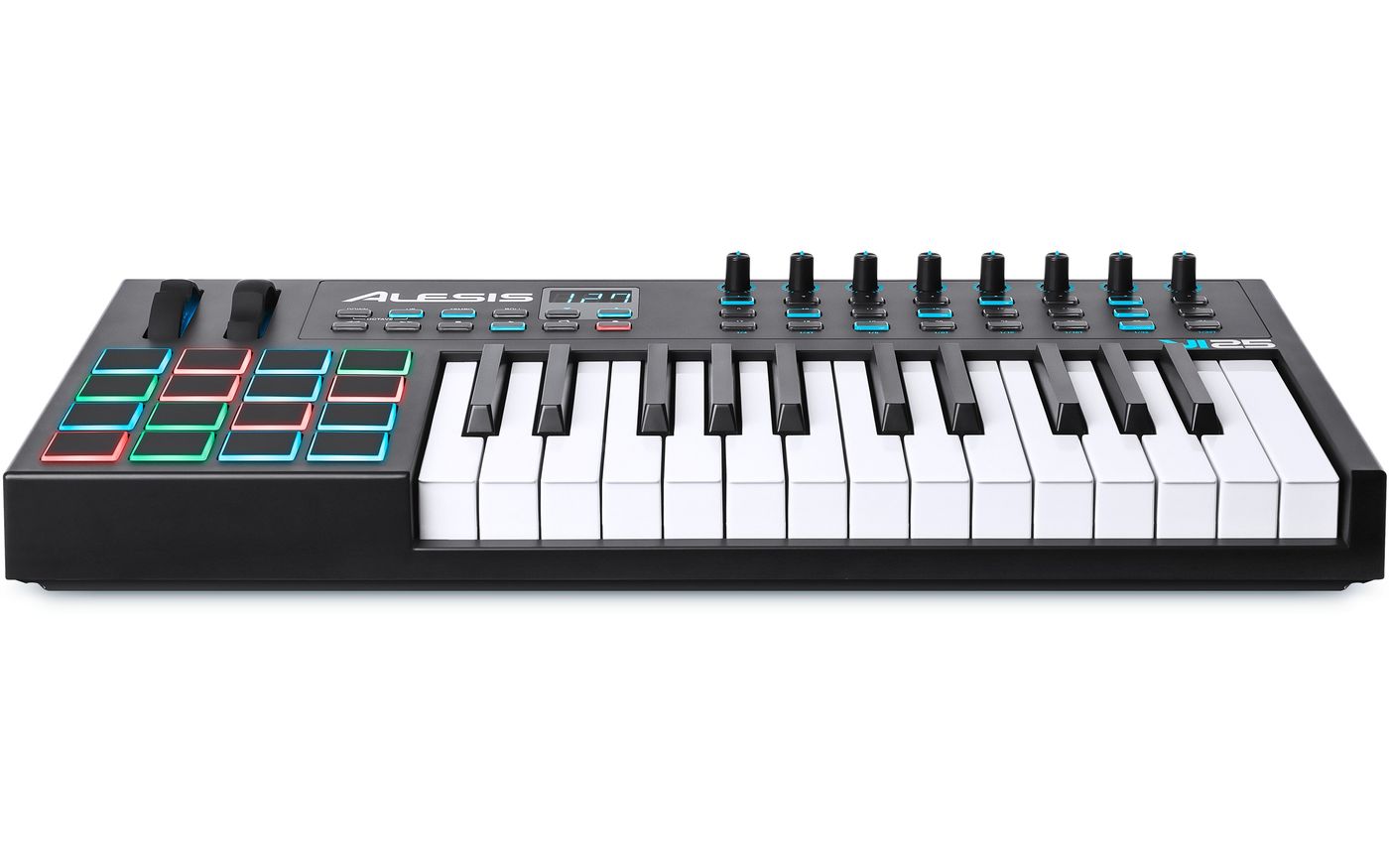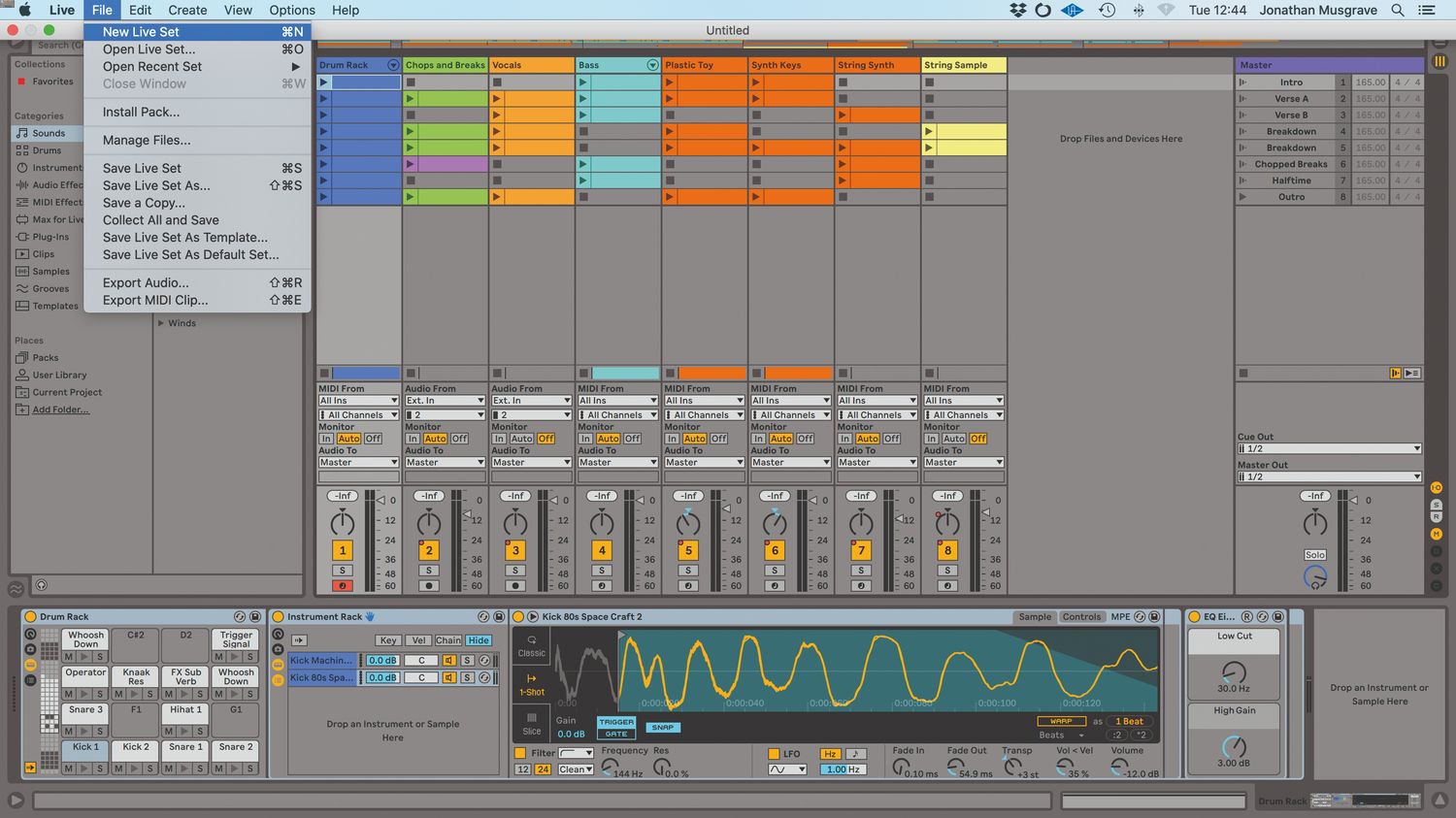Home>Production & Technology>MIDI>How To Stop A Delay With A MIDI Controller In Ableton
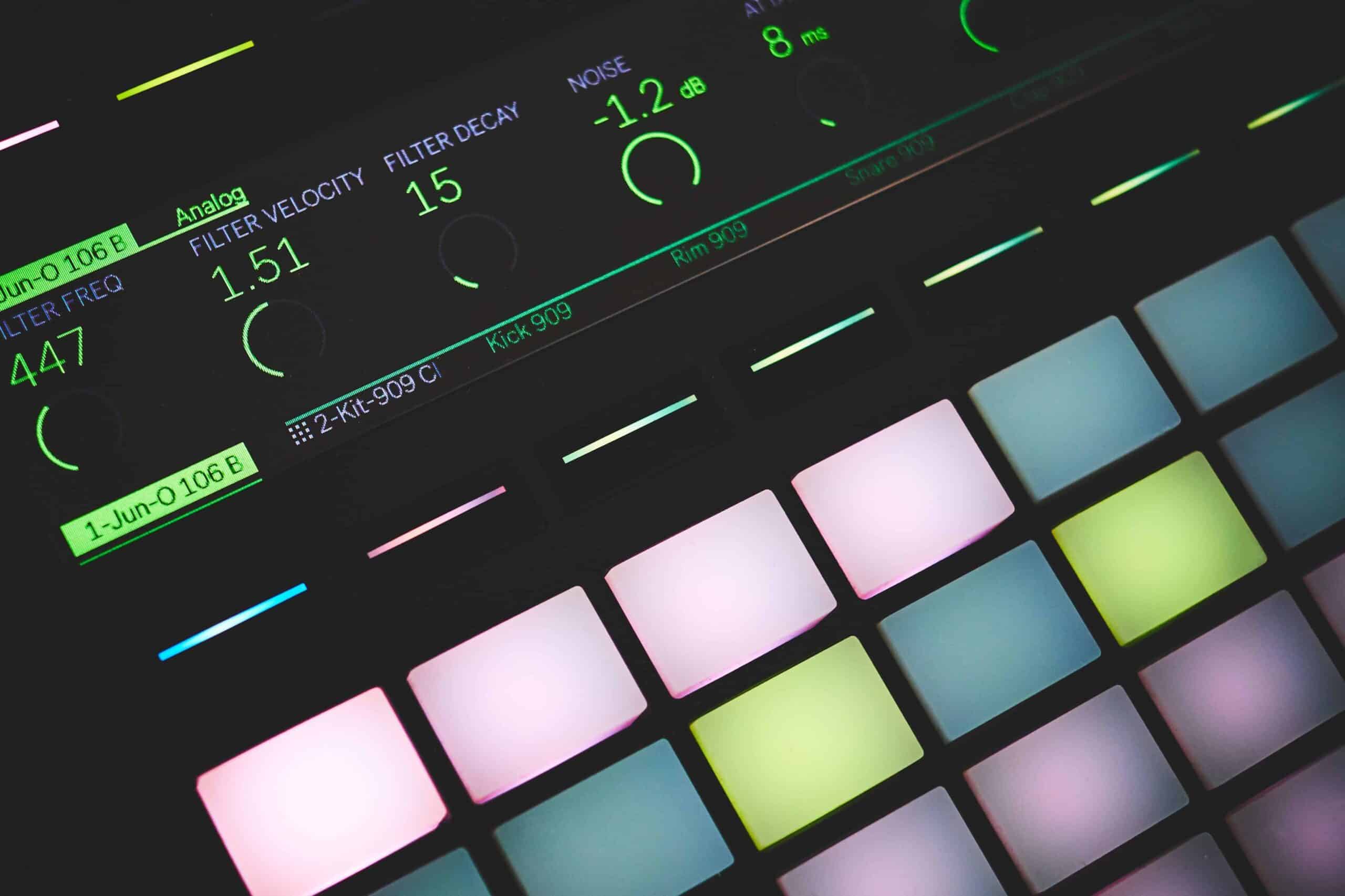

MIDI
How To Stop A Delay With A MIDI Controller In Ableton
Modified: March 9, 2024
Learn how to quickly resolve MIDI controller delays in Ableton with our step-by-step guide. Stop the frustration and get back to making music seamlessly.
(Many of the links in this article redirect to a specific reviewed product. Your purchase of these products through affiliate links helps to generate commission for AudioLover.com, at no extra cost. Learn more)
Table of Contents
Introduction
Imagine you're in the midst of a creative burst, crafting a musical masterpiece in Ableton Live, and suddenly, you notice an annoying delay between your MIDI controller and the software. Frustrating, right? Well, fear not, as this article is your ultimate guide to resolving such MIDI controller delays in Ableton Live.
MIDI controllers serve as the bridge between your musical ideas and the digital realm, allowing you to control various parameters in your music software with physical knobs, faders, and keys. However, when a delay rears its ugly head, it can disrupt your creative flow and hinder the seamless translation of your musical expressions into the digital workspace.
In this comprehensive guide, we will delve into the intricacies of MIDI controllers and the common occurrence of delays in Ableton Live. Whether you're a seasoned music producer or a novice exploring the world of digital music creation, understanding and addressing MIDI controller delays is crucial for a smooth and efficient workflow in Ableton Live.
Now, let's embark on a journey to demystify the complexities of MIDI controller delays and equip ourselves with the knowledge and techniques to eliminate these pesky hindrances in our music production endeavors. So, fasten your seatbelts, as we dive into the realm of MIDI controllers and unravel the mysteries of delay troubleshooting in Ableton Live.
Understanding MIDI Controllers and Delay in Ableton
MIDI controllers are the unsung heroes of modern music production, serving as the physical interface that allows musicians and producers to interact with their digital audio workstations (DAWs) such as Ableton Live. These versatile devices come in various forms, including keyboard controllers, pad controllers, and MIDI control surfaces, each offering a unique set of tactile controls to manipulate virtual instruments, effects, and other parameters within the software.
In the context of Ableton Live, MIDI controllers play a pivotal role in shaping the creative process, offering hands-on control over instrument parameters, mixer settings, and live performance elements. However, despite their numerous advantages, MIDI controllers can sometimes exhibit delays when communicating with the software, resulting in a noticeable lag between physical input and the corresponding action in the DAW.
The occurrence of delay with MIDI controllers in Ableton Live can stem from several factors, including hardware latency, software settings, and system performance. Hardware latency, often associated with the inherent response time of the MIDI controller itself, can introduce perceptible delays in triggering notes, adjusting parameters, or launching clips. On the software side, improper configuration of MIDI settings, buffer sizes, and driver issues can also contribute to latency issues, impacting the real-time responsiveness of the MIDI controller within Ableton Live.
Understanding the nature of MIDI controller delays is crucial for troubleshooting and implementing effective solutions to ensure a seamless and responsive music production environment. By gaining insight into the underlying causes of these delays, users can make informed adjustments and optimizations to minimize latency and enhance the overall performance of their MIDI controllers in Ableton Live.
As we venture deeper into the realm of MIDI controller troubleshooting, we will explore the intricacies of addressing delay issues and optimizing MIDI controller settings in Ableton Live, empowering users to unlock the full potential of their creative endeavors without the hindrance of unwanted latency.
Adjusting MIDI Controller Settings in Ableton
When faced with MIDI controller delays in Ableton Live, delving into the software's settings to fine-tune the configuration of MIDI controllers can be a game-changer in mitigating latency issues. By adjusting specific parameters and optimizing the interaction between the MIDI controller and Ableton Live, users can significantly improve the responsiveness and real-time performance of their setup.
1. MIDI Preferences
A crucial starting point for addressing MIDI controller delays involves navigating to the MIDI preferences within Ableton Live. Here, users can access essential settings that directly impact the behavior and communication of MIDI controllers with the software. By adjusting parameters such as MIDI input and output configurations, users can ensure that their MIDI controllers are properly recognized and integrated within Ableton Live, laying the groundwork for efficient and responsive control.
2. Latency Compensation
Ableton Live offers latency compensation settings that allow users to account for the inherent delays introduced by audio interfaces and MIDI controllers. By fine-tuning the latency compensation settings, users can align the timing of MIDI controller input with the corresponding audio and software responses, effectively reducing perceptible delays and enhancing the overall synchronization of the music production workflow.
3. Buffer Size Optimization
Buffer size plays a pivotal role in determining the responsiveness of MIDI controllers in Ableton Live. Adjusting the buffer size settings within the software can directly impact the latency experienced when interacting with MIDI controllers. By finding the optimal balance between buffer size and system performance, users can minimize delays and ensure a more seamless and immediate response to their MIDI controller inputs.
4. MIDI Sync Settings
Exploring the MIDI sync settings in Ableton Live allows users to refine the synchronization between MIDI controllers and the software's internal clock. By configuring MIDI sync parameters, including clock source and timing options, users can enhance the accuracy and reliability of MIDI controller interactions, reducing the likelihood of timing discrepancies and delays during performance and production scenarios.
5. Driver and Firmware Updates
In some cases, MIDI controller delays can be attributed to outdated drivers or firmware. Ensuring that the MIDI controller's drivers and firmware are up to date is crucial for optimizing compatibility and performance within Ableton Live. By staying abreast of manufacturer updates and implementing the latest driver and firmware revisions, users can address potential latency issues stemming from hardware communication and compatibility concerns.
By delving into these nuanced aspects of MIDI controller settings within Ableton Live, users can proactively tackle latency issues and elevate the responsiveness of their music production environment. Through meticulous adjustments and optimizations, the potential for MIDI controller delays can be mitigated, allowing users to immerse themselves in a fluid and dynamic creative process without the disruptive influence of unwanted latency.
Using MIDI Mapping to Stop Delay in Ableton
Harnessing the power of MIDI mapping within Ableton Live presents a versatile and effective approach to combat MIDI controller delays, offering users the ability to redefine and optimize the interaction between their physical controllers and the software. MIDI mapping empowers users to assign MIDI controller parameters to specific functions and controls within Ableton Live, enabling seamless and intuitive manipulation of various elements without the encumbrance of latency issues.
1. Identifying Latency-Affected Parameters
When confronted with MIDI controller delays, the initial step in utilizing MIDI mapping to alleviate latency involves identifying the parameters and controls that are most susceptible to timing discrepancies. This could encompass instrument parameters, mixer controls, effect parameters, or any other elements that exhibit noticeable delays when manipulated using the MIDI controller.
2. Reassigning MIDI Controls
By leveraging MIDI mapping, users can reassign MIDI controls to directly modulate the identified parameters, circumventing the inherent delays and ensuring immediate and precise control over the targeted functions. Through the intuitive MIDI mapping interface in Ableton Live, users can effortlessly link MIDI controller inputs to specific software parameters, effectively bypassing latency-related impediments and fostering a more responsive and dynamic music production environment.
3. Fine-Tuning MIDI Controller Assignments
Once MIDI controls have been mapped to the pertinent parameters, users can fine-tune the assignments to optimize the responsiveness and behavior of the MIDI controllers within Ableton Live. This may involve adjusting the MIDI mapping ranges, sensitivity curves, and response settings to tailor the interaction between the physical controllers and the software, aligning them in a manner that minimizes perceptible delays and enhances the precision of control.
4. Real-Time Performance Enhancements
Through strategic MIDI mapping, users can unlock the potential for real-time performance enhancements, allowing for fluid and immediate manipulation of critical parameters without the encumbrance of latency-induced disruptions. Whether triggering samples, adjusting synth parameters, or modulating effects, MIDI mapping empowers users to reclaim control over their musical expressions, fostering a seamless and immersive creative experience within Ableton Live.
By embracing the capabilities of MIDI mapping, users can effectively mitigate MIDI controller delays, revitalizing their creative workflow and ensuring that the expressive potential of their MIDI controllers remains unhindered by timing discrepancies. This proactive approach to leveraging MIDI mapping as a latency-alleviating tool underscores the adaptability and ingenuity inherent in the realm of digital music production, empowering users to transcend the limitations imposed by latency and immerse themselves in a fluid and responsive creative process.
Conclusion
In the realm of music production, the seamless integration of MIDI controllers with digital audio workstations such as Ableton Live is foundational to the creative process. However, the onset of MIDI controller delays can disrupt the natural flow of musical expression, impeding the immediacy and responsiveness that are essential for a fluid and dynamic production environment.
As we conclude this comprehensive guide to addressing MIDI controller delays in Ableton Live, it is evident that a nuanced understanding of the underlying causes of latency, coupled with strategic adjustments and proactive measures, is paramount in mitigating these impediments. By delving into the intricacies of MIDI controller settings, latency compensation, buffer optimization, and MIDI mapping, users can empower themselves to reclaim control over their musical endeavors, transcending the limitations imposed by timing discrepancies and latency-induced disruptions.
Furthermore, the utilization of MIDI mapping as a tool for circumventing latency issues underscores the adaptability and ingenuity inherent in the digital music production landscape. By redefining the interaction between physical controllers and software parameters, users can foster an environment where creative expression remains uninhibited by the encumbrance of delays, enabling a seamless and immersive music production experience.
It is imperative for music producers, artists, and enthusiasts alike to embrace a proactive approach to addressing MIDI controller delays, recognizing that a harmonious synergy between physical controllers and digital workstations is essential for unlocking the full potential of musical creativity. Through meticulous adjustments, optimizations, and the strategic utilization of MIDI mapping, users can transcend the barriers imposed by latency, ensuring that their musical expressions unfold with immediacy and precision, unfettered by the disruptions of timing discrepancies.
As we bid adieu to the realm of MIDI controller delays in Ableton Live, let us carry forth this knowledge and empowerment, fostering an environment where the seamless integration of technology and creativity paves the way for uninhibited musical innovation. With a newfound understanding of MIDI controller troubleshooting and latency-alleviating techniques, users can embark on their music production odyssey with confidence, knowing that they hold the keys to a responsive, dynamic, and latency-free creative journey within the realm of Ableton Live.

